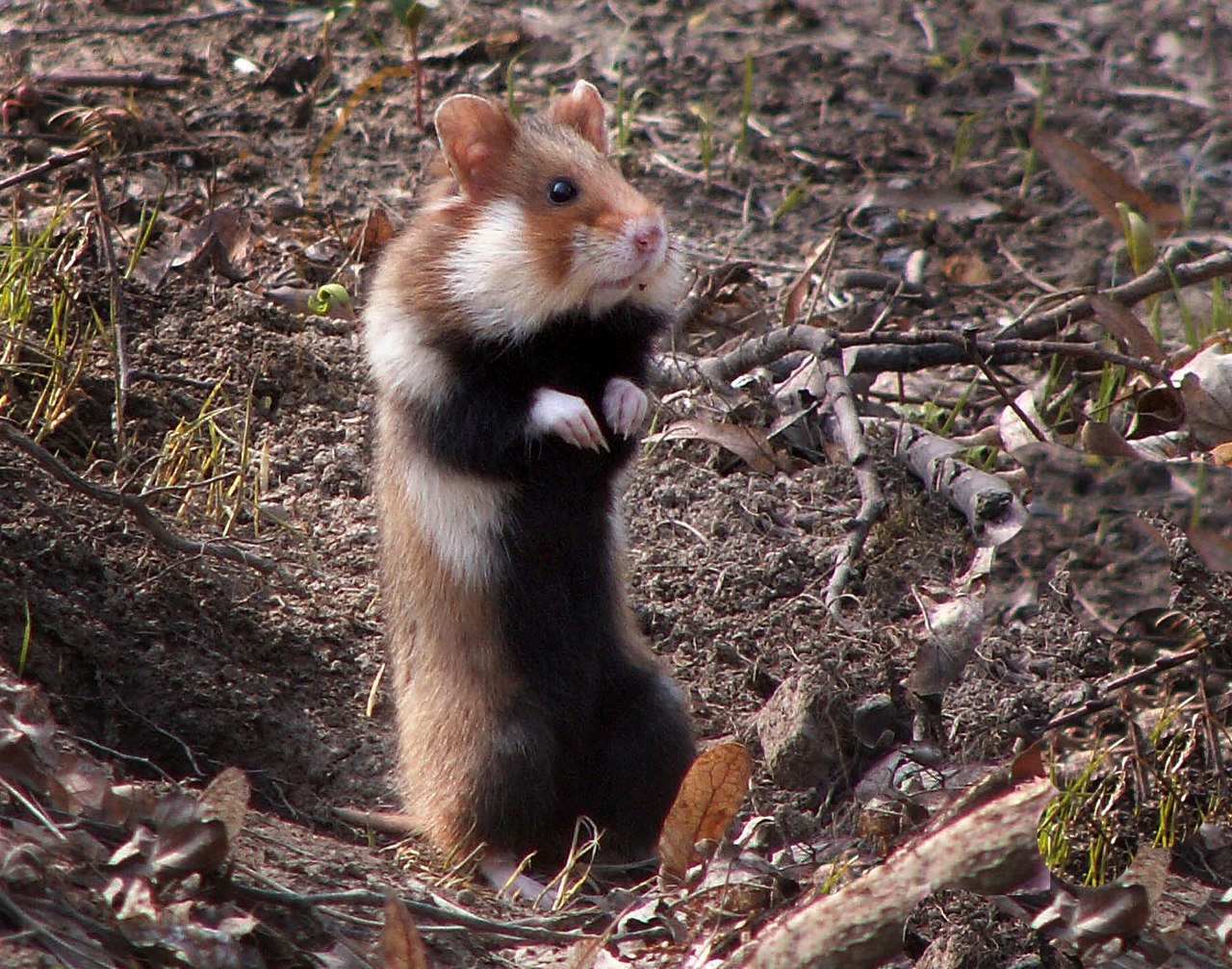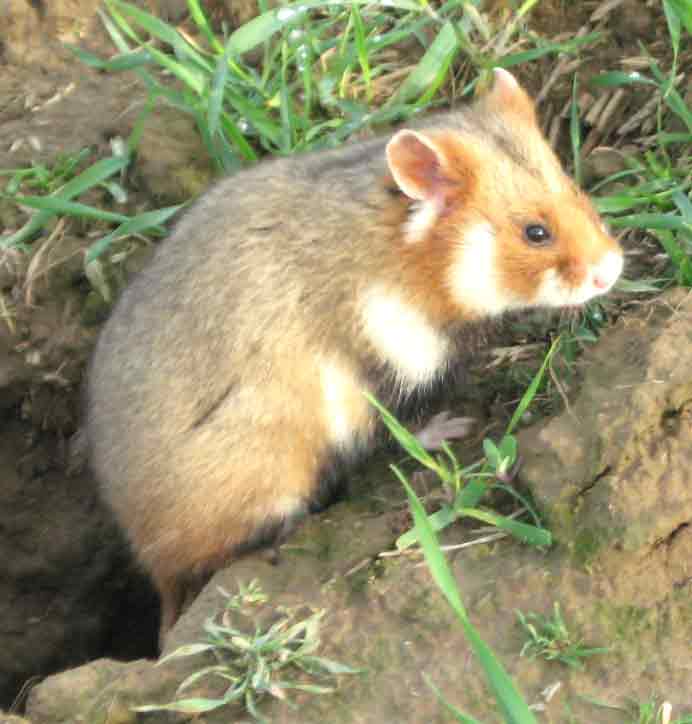The European hamster, formally known as Cricetus cricetus, represents a fascinating member of the rodent family. Its common aliases include the Eurasian hamster, black-bellied hamster, or simply, the common hamster. Endemic to Europe, this species embodies a unique blend of characteristics that distinguish it from its rodent counterparts. Its scientific classification as the sole species within the genus Cricetus underscores its distinctiveness within the animal kingdom.
European Hamster: Profile, Facts, Traits, Size, Pet, Baby, Diet

Distribution and Habitat
The Great Hamster of Alsace, also known as the European Hamster, is indigenous to grasslands and similar environments across a vast expanse of Eurasia, stretching from Belgium all the way to the Altai mountains and the Yenisey River in Russia. These regions provide the necessary conditions for the hamster’s survival, offering suitable food sources and shelter. Despite its widespread distribution, the hamster faces significant challenges in certain areas where it is considered a pest to farmland. Additionally, it has historically been targeted for trapping due to its fur. However, over recent years, its population has dwindled dramatically, leading to its classification as critically endangered.
Endangered Status
Once abundant across its native range, the European Hamster now teeters on the brink of extinction. The decline in its population is alarming, with various factors contributing to its precarious status. Human activities such as habitat destruction and agricultural expansion have encroached upon its natural habitats, reducing available living spaces for these creatures. Furthermore, the hamster’s appeal as a fur-bearing animal has led to excessive trapping, further decimating its numbers. Despite efforts to conserve and protect the species, its future remains uncertain.
Unique Characteristics
The Great Hamster of Alsace, distinguished as the sole wild hamster species in Europe, possesses unique characteristics that set it apart. With a typical length of around 10 inches, adorned with endearing black and white markings, it captures the attention of admirers. However, its charm belies the harsh reality of its plight. Despite its appealing appearance, the species faces an uphill battle for survival. The narrative of the European Hamster serves as a poignant reminder that attractiveness alone cannot safeguard a species from the brink of extinction.
Longevity in Captivity
In controlled laboratory environments, the European Hamster exhibits remarkable longevity, with a lifespan averaging around eight years. This exceptional longevity distinguishes it among its rodent counterparts, earning it the title of the hamster with the lengthiest overall lifespan. However, such longevity in captivity stands in stark contrast to its precarious existence in the wild. Despite its potential for longevity under optimal conditions, the challenges posed by habitat degradation and human interference continue to threaten its existence in its natural habitat.
Size and Weight
Among its notable features, the size of the European Hamster stands out prominently. It holds the distinction of being the largest species of hamster, measuring between eight to eleven inches in length and weighing approximately 16 to 21 ounces. This substantial size distinguishes it within the rodent family, contributing to its unique ecological niche within its native habitats. Despite its size, the European Hamster remains vulnerable to the myriad threats posed by human activities and environmental degradation, underscoring the fragility of its existence.
Other Recommended Reading
- Colombian Weasel – Profile | Traits | Facts | Description
- Indonesian Mountain Weasel – Profile | Traits | Facts | Diet
- Yellow-Bellied Weasel – Profile | Traits | Facts | Ecology
- Back-Striped Weasel – Profile | Traits | Facts | Behavior | Diet
- Saharan Striped Polecat – Profile | Facts | Traits | Behavior
- Giant Panda – Profile | Traits | Facts | Cute | Body | Zoo | Habitat
- Beech Marten – Profile | Traits | Facts | Size | Track | Baby
- Wild Boar – Profile | Traits | Facts | Characteristics | Size | Diet
- Large White Pig – Profile | Characteristics | Facts | Lifespan | Diet
- Duroc Pig – Description | Profile | Traits | Facts | Breeds | Size
- Berkshire Pig – Profile | Characteristics | Facts | Ears | Breeds
- Eurasian Otter – Profile | Traits | Facts | Skull | Food | Feet | Face
- Myocastor Coypus – Coypu | Profile | Traits | Facts | Skull | Diet
- Eurasian Beaver – Profile | Traits | Facts | Food | Habitat | Teeth
- North American River Otter – Profile | Traits | Facts | Habitat | Size
- Marine Otter – Profile | Traits | Facts | Size | Range | Habitat | Food
- Smooth-Coated Otter – Profile | Traits | Facts | Swimming | Cute
- Neotropical Otter – Profile | Traits | Facts | Baby | Pup | River
- African Clawless Otter – Profile | Traits | Facts | Baby | Habitat | Pet
- Southern River Otter – Profile | Traits | Facts | Diet | Baby | Behavior
